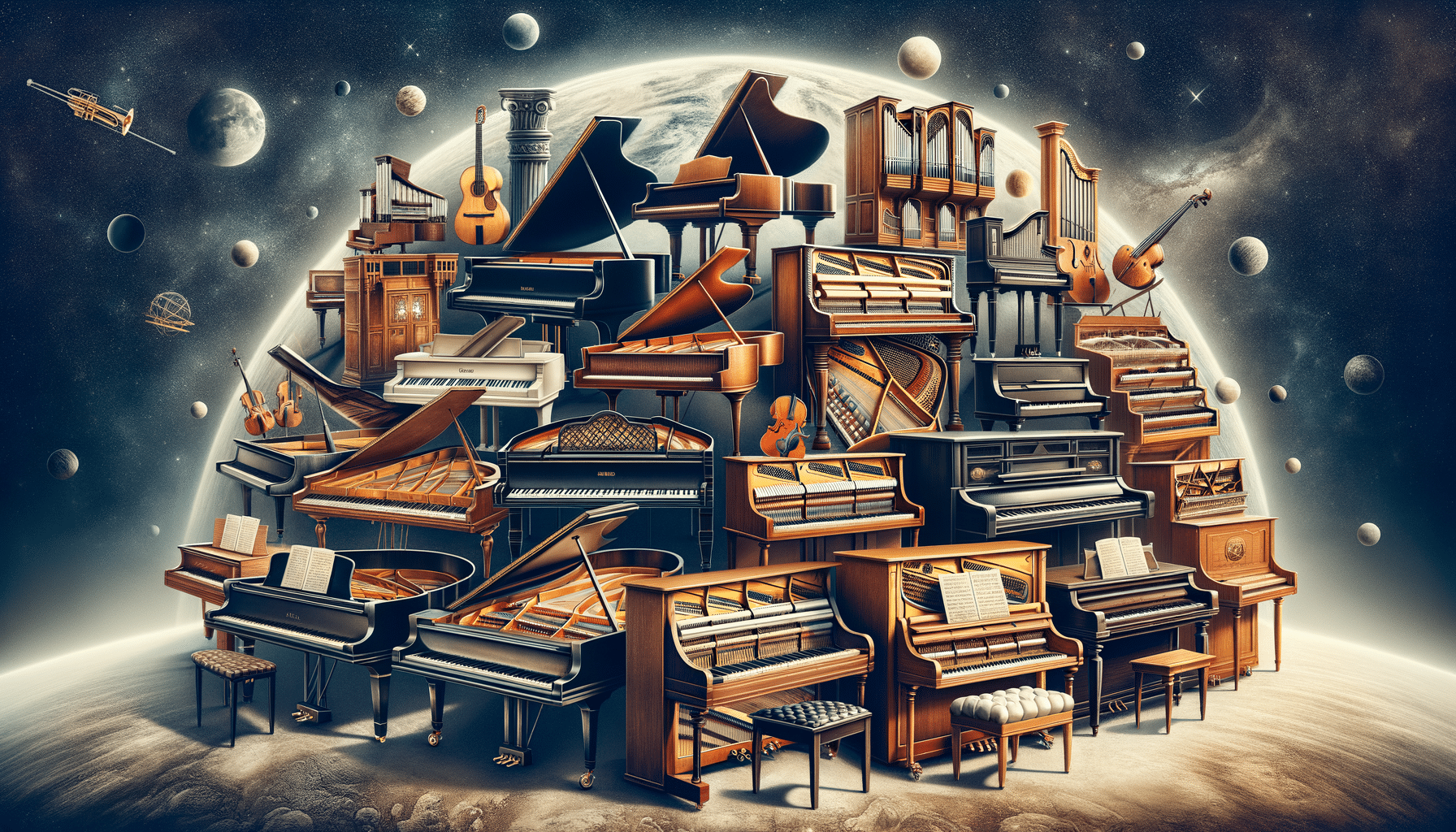
The Melodic Journey: Exploring the World of Pianos
Introduction to Pianos: A Timeless Instrument
The piano, with its rich history and versatile sound, stands as one of the most beloved musical instruments worldwide. From the grand concert halls to intimate living rooms, pianos have been central to musical expression for centuries. Originating in the early 18th century, the piano evolved from earlier stringed instruments like the clavichord and harpsichord. Its ability to produce both soft and loud tones (hence the name “pianoforte”) revolutionized music, offering composers a dynamic range of expression.
Today, pianos are integral to many music genres, including classical, jazz, and pop. They serve as both solo and accompanying instruments, providing a harmonic foundation for ensembles and orchestras. The piano’s influence extends beyond music; it has been a cultural symbol, appearing in literature, film, and art. Understanding the piano’s history, types, and its role in music can deepen one’s appreciation for this remarkable instrument.
The Evolution of Piano Design
The piano’s design has undergone significant changes since its inception. Early pianos, known as fortepianos, were smaller and had a lighter touch compared to modern instruments. Over time, technological advancements and changing musical demands led to the development of the modern piano, characterized by its robust frame and extended range.
Key innovations in piano design include the introduction of the iron frame, which allowed for greater string tension and a more powerful sound. The double escapement action, invented by Sébastien Érard in the 19th century, enabled faster repetition of notes, which was crucial for the virtuosic demands of Romantic music. These advancements contributed to the piano’s enduring popularity and its ability to meet the evolving needs of composers and performers.
Today, pianos come in various forms, including grand, upright, and digital models. Each type has unique features and advantages, catering to different musical contexts and personal preferences. Understanding these variations can help musicians and enthusiasts choose the right piano for their needs.
Grand vs. Upright Pianos: A Comparative Analysis
When choosing a piano, one of the primary considerations is whether to opt for a grand or an upright model. Both types have distinct characteristics that make them suitable for different settings and purposes.
Grand pianos, with their horizontal strings and larger soundboards, offer a richer and more resonant sound. They are often favored for concert performances and professional recordings. The action of a grand piano is more responsive, allowing for greater control over dynamics and expression. However, their size and cost can be prohibitive for some, making them less practical for home use.
In contrast, upright pianos are more compact and affordable, making them ideal for home environments and smaller venues. While they may not match the tonal depth of a grand piano, modern upright pianos can still produce a pleasing and dynamic sound. They are also easier to maintain and move, adding to their appeal for casual players and students.
Ultimately, the choice between a grand and an upright piano depends on individual needs, space, and budget. Both types have their merits, and understanding these can guide potential buyers in making an informed decision.
The Rise of Digital Pianos: Technology Meets Tradition
In recent years, digital pianos have gained popularity as a versatile and accessible alternative to traditional acoustic pianos. These instruments use electronic technology to replicate the sound and feel of a piano, offering several advantages over their acoustic counterparts.
One of the key benefits of digital pianos is their portability and space-saving design. They are often lighter and more compact, making them suitable for musicians on the go or those with limited space. Digital pianos also offer a range of features, such as built-in metronomes, recording capabilities, and various sound options, enhancing the learning and playing experience.
Moreover, digital pianos require less maintenance than acoustic pianos, as they do not need tuning. They also allow for silent practice with headphones, making them ideal for urban living where noise can be a concern. While some purists may argue that digital pianos lack the nuanced sound of an acoustic piano, advancements in technology have significantly narrowed this gap, providing an excellent option for both beginners and experienced players.
Conclusion: The Piano’s Enduring Legacy
The piano remains a cornerstone of musical culture, celebrated for its expressive range and versatility. Whether through the grandeur of a concert grand, the practicality of an upright, or the innovation of a digital piano, this instrument continues to inspire musicians and listeners alike.
As we look to the future, the piano’s legacy is assured, with new generations of musicians discovering its potential and contributing to its rich history. Whether you are a performer, a student, or an enthusiast, the piano offers endless possibilities for exploration and creativity.
In embracing the piano, we connect with a tradition that spans centuries, celebrating an instrument that has shaped the soundscape of our world.

